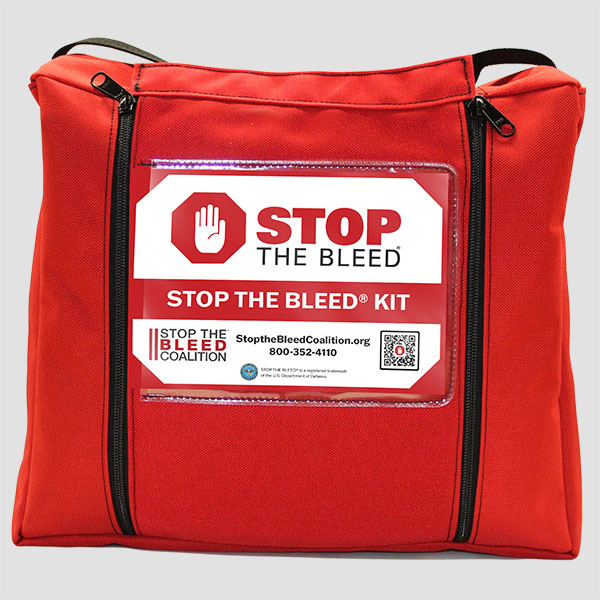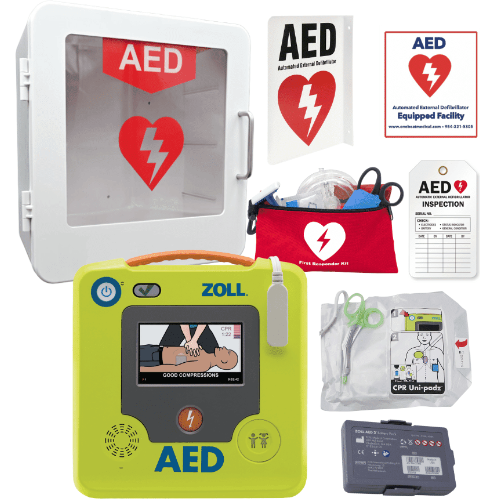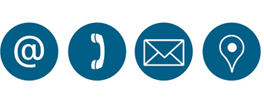Bleeding kits are essential tools used in emergency situations to control bleeding and provide first aid. They typically contain items like:
Dressing and Bandages: Sterile gauze pads, trauma dressings, and elastic bandages for applying pressure.
Tourniquets: Devices designed to apply pressure to a limb to control severe bleeding.
Antiseptic Wipes: For cleaning the area around a wound to reduce the risk of infection.
Medical Tape: To secure dressings in place.
Gloves: Disposable gloves to protect both the responder and the victim.
Scissors: To cut clothing or dressings as needed.
Instructions: Guidelines for proper use of the kit and how to manage bleeding.
It's important for individuals and organizations to keep these kits well-stocked and easily accessible, especially in environments where injuries are more likely to occur, such as workplaces, schools, or outdoor activities. Regularly check expiration dates and restock items as needed. Would you like to know more about specific components or how to use them?

An AED kit typically refers to a complete package that includes an Automated External Defibrillator (AED) along with essential accessories and supplies for effective emergency response in the event of a cardiac arrest. Here’s what an AED kit generally contains:
Components of an AED Kit
Automated External Defibrillator (AED)
The primary device that analyzes the heart's rhythm and delivers an electric shock if needed. Most models provide voice prompts and visual indicators to guide users through the process.
Electrode Pads
Adult Pads: Used for most adults.
Pediatric Pads: Smaller pads designed for use on children, often with specific instructions for use.
CPR Mask
A barrier device that allows the rescuer to provide rescue breaths safely during CPR.
Disposable Gloves
Latex or nitrile gloves to protect the responder while administering aid.
Scissors
For cutting clothing or other materials to access the chest during an emergency.
Alcohol Wipes
For cleaning the skin where the pads will be applied, ensuring good adhesion.
User Instructions
Clear, step-by-step instructions for operating the AED, often in a user-friendly format.
Maintenance Log
A log to track inspections, maintenance, and any usage of the AED, including battery and pad expiration dates.
Emergency Contact Information
Instructions on whom to contact for emergency services and internal protocols.
Signage
Clear signage indicating the location of the AED and how to use it, often featuring bright colors for visibility.
Benefits of Having an AED Kit
Immediate Response: Enables quick action in cardiac emergencies, potentially saving lives.
User-Friendly: Designed for use by laypersons, making it accessible to non-medical staff and bystanders.
Training Resource: Having an AED kit can encourage staff training and familiarity with emergency procedures.
Considerations for Implementation
Placement: Ensure the AED kit is placed in a highly visible and easily accessible location.
Regular Maintenance: Schedule routine checks to ensure the AED and its components are functional and up to date.

Installing bleeding kits in hotels is a proactive step toward ensuring guest and staff safety. Here are some key considerations and steps for implementation:
1. Assess Risk Areas
Identify high-risk areas such as kitchens, pools, gyms, and event spaces where injuries are more likely to occur.
2. Choose Appropriate Kits
Select bleeding kits that are suitable for your hotel's needs. Consider including items like tourniquets, sterile dressings, and gloves.
3. Strategic Placement
Position kits in easily accessible areas, clearly marked for visibility. Consider locations like:
Reception desks
Housekeeping areas
Employee break rooms
Near first aid stations
4. Training Staff
Provide training for staff on how to use the kits effectively. This can include:
Basic first aid training. We provide free CPR training






